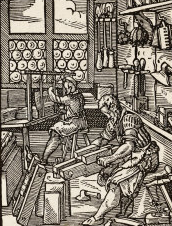“Incongruities, mysteries”: Freaks and Incongruous Wor(l)ds in Contemporary American Fiction
Résumé
Des bêtes curieuses dans la tente qui expose des « incongruités et des mystères » dans le roman de Rikki Ducornet The Jade Cabinet, à l’exorciste étrange et scandaleux de The Stain, en passant par les monstrueuses affamées de Patricia Eakins qui dévorent le ventre de leur mère à la naissance, ou encore Pierre Baptiste, le protagoniste de son roman, un homme qui donne naissance à des hommes-poissons, le regard du lecteur s’arrête, émerveillé, stupéfait, et souvent horrifié.
La narration place des créatures incongrues dans des mondes fictifs que le lecteur reconnaît à travers un réseau de références historiques, géographiques et littéraires ; les fictions de Ducornet et Eakins perturbent l’équilibre du monde familier du lecteur, et révèlent l’existence de multiples réalités.
La brèche qui révèle l’Unheimlichkeit du réel perturbe le lecteur dans sa compréhension du monde, mais aussi le sens lui-même. Les nouveaux mondes incongrus font naître de nouveaux mots incongrus : ils jouent avec les normes lexicales et linguistiques, avec le langage, les mots et le sens.
Cet article étudie les représentations fictionnelles incongrues de Patricia Eakins et de Rikki Ducornet, et ce qu’elles révèlent sur la nature de la réalité, de la fiction et du langage. Cette étude se concentrera sur le roman et le recueil de nouvelles de Patricia Eakins (The Marvelous Adventures of Pierre-Baptiste et The Hungry Girls and Other Stories) et sur les cinq premiers romans de Rikki Ducornet (The Stain, Entering Fire, The Jade Cabinet, The Fountains of Neptune etPhosphor in Dreamland).
Téléchargements
Publiée
Numéro
Rubrique
Licence
-
L’envoi spontané d’un article à la rédaction de L’Atelier implique l’autorisation de publication et la cession des droits dans les limites établies par la loi de propriété intellectuelle.
-
L’Atelier conserve les droits de reproduction des articles publiés, quelque soit le support : internet, CD ROM, réimpression, photocopie, etc.
-
L’auteur conserve le droit de publier ultérieurement son article déjà paru dans L’Atelier avec la seule obligation de mentionner le nom de la revue comme source de la première publication.


